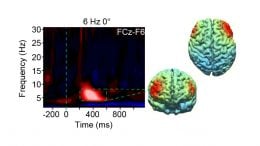
Coronavirus News Roundup, July eleven-july 17
Jonathan Hopkins of the University of California, Los Angeles and colleagues report a scalable approach to assembling 3D arrays of microgranular crystals using holographic optical tweezers. Vascular networks are central parts of organ‐on‐a‐chip systems.
Newer Variant Of Covid-19-inflicting Virus Dominates Global Infections
Jesper Nygård and Thomas Sand Jespersen from the University of Copenhagen and their co-employees have created a crystal development platform for in situ development of semiconductor/superconductor hybrids. The method eliminates the necessity for etching, enabling full freedom in the alternative of hybrid constituents. There is art in science and science in artwork — right here we’ve put together a number of the most inspiring science pictures revealed in our journals this month.
The planks in this “woodpile” design are a mere 30 nanometers apart from one another. Frederik Mayer and Martin Wegener of Karlsruhe Institute of Technology, and their co-employees constructed this tiny object utilizing a brand new material for 3D printing. Xiaohu Gao from the University of Washington and associates combine two highly effective technologies; quantum dots and a method for amplifying the fluorescence given off by imaging molecules, known as sign amplification by trade response (SABER).
This SEM image comes courtesy of Roey Elnathan and Nicolas Voelcker at Monash University, and their co-staff, demonstrating the use of vertical silicon nanotubes (SiNTs) to govern cell progress and gene editing by way of intracellular supply of small molecules. The massive scale bar represents 10 µm, whilst the size bar within the inset represents just 2 µm.
A recent research finds that as much as 31{ba001e18389df7520355fa6d1d9ab7d4a1f9ec77cec85e592eb8ec0edea01c6c} of plastic exported for recycling just isn’t recycled in any respect. Understanding the mechanisms that regulate coordinated progress within the body and the outstanding parallels between species allows scientists to create a common mannequin for morphological scaling.
